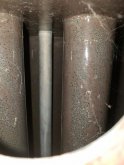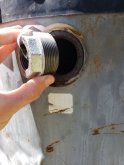TheDroidsYouAreLookingFor
New Member
- Joined
- Dec 30, 2019
- Messages
- 93
That would be the ultimate in efficiency but ultimately not the most efficient use of my dollars. Solar is about 15 cents a watt used where i live. I have acreage so space is no concern. My pool is not near my freezer, my air conditioner is not near my pool. I can just keep up the solar sprawl nearly indefinitely. I can afford to waste solar production in my particular situation because power from my provider is 40 cents a KWH in the summer. Payback is quick as long as i keep initial cost down. The large black pool panels make STUPID amounts of heat when the sun is up and shining and nearly nothing when cold or cloudy. (non insulated) That being said 2 panels raise my pool temp real world 1 degree an hour (10,000 gal) and the hot tub will increase 6 degrees an hour and would be 120 degrees easily if i don't turn off the circulation pump by noon. I like heat pumps but simple is better from my own experience. Heat pumps fail more often than resisters and they cost more. So 10x the cost or more for 5x the efficiency but 1/2 the expected life and or maintenance interval. Dont get me wrong, i am a heat pump fanboy but the amount of work involved and complexity to make a system that cools my air, heats my domestic water and pool, heats my house and floors ect is an epic task. For now I will keep it simple and inefficient just because its Dirt Cheap and Just as capable. I also don't have net metering so anything i over produce from grid tied solar i lose forever. I will put a Kw meter on my hot water heater to see the difference it makes.









